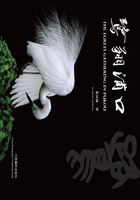
Preface

Since December 2008, my photobook “The Soul of Lotus[2]” has been published in China Photographic Publishing House, I have been thinking about another photobook, and the question goes to what can I do for my hometown? Therefore, I have to looking through Pukou thoroughly.
Pukou, a district of Nanjing, sized 913km2, consists of 8 neighborhoods, Taishan, Dingshan, Yanjiang, Pancheng, Jiangpu, Tangquan, Qiaolin, Xingdian, and Yongning Town. Pukou District preponderates in geographic position, located at south of the Yangtze River, north of the Chuhe River, and crossing Laoshan. The rivers and mountains run from east to west. The plains stretch, with crossing path and weaving networks, making Pukou a shining pearl at the north bank of the Yangtze River. Lin Sanzhi, a recent calligraphy master, Zhang Ji, a famous poet of Tang Dynasty, and Zhang Xiaoxiang, a patriotic poet, were all born in Pukou. Prince Zhaoming of Liang Dynasty studied here, while the Emperor Zhu Yuanzhang of Ming Dynasty once took a bath in the hot spring here. Many famous poets, such as Su Dongpo, Wang Anshi, Qin Shaoyou,and Chen Xianzhang, brought out their immortal poems here.“One calligraphy master in Cursive, miles of hot springs, miles of the Laoshan mountain; ancient gingkoes of thousand years, ten thousand herons, and 10 acres of National Forest Park”All these words make a lively conclusion of the humanities and the natural landscape in Pukou.
In 2009,“Discovering Oriental” Hot Spring Cultural Festival was held in Daji Spa Resort, I was invited to the event. What impressed everyone was the thousands of trees, a forest of bamboo with crowds of herons. And I was amazed at the beautiful scenery and the elegancy of herons. Therefore, I started to capture the herons in Pukou.
The heron is the generic term of the Ardeidea Birds of Ciconiiformes. It is a medium-to-large-sized wading bird. They mostly can be found near the wetlands and the woodlands, as an indicator species in wetland ecosystems. There are nine common herons in Pukou, such as Great Egret, Intermediate Egret, Little Egret, Yellow-billed Egretta, Chinese Pond-heron, Heron, Purple Heron, Black-crowned Night Heron, Cattle Egret.
In the process of shooting herons, I have often been touched by behavior of bird enthusiasts. There are hundreds of acres of pine trees in Daji Botanical Garden; tens of thousands of herons thrive here every year. Though the acidic guano make the trees corroded, and affect the growth and sale of the pine trees, Daji people accept it without any complaints and strictly forbid others from fowling or stealing bird eggs. There are nearly 1000 acres of fish ponds in Tangquan Farm, which is the herons’main habitat, and the local fishermen never disturb them but treat them as guests.
I spent three years to complete thousands of photos of herons. The selection in this book record the living conditions of egrets, as well as the beautiful scenery of my hometown, dedicating to the world and bird lovers and protectors. And through this book, I wish you could find a perfect harmony between man and nature.
Zhang Guodong
March, 2013 in Pukou